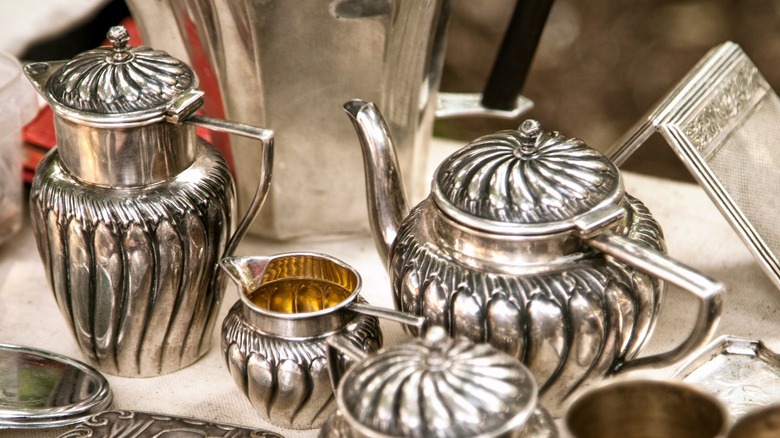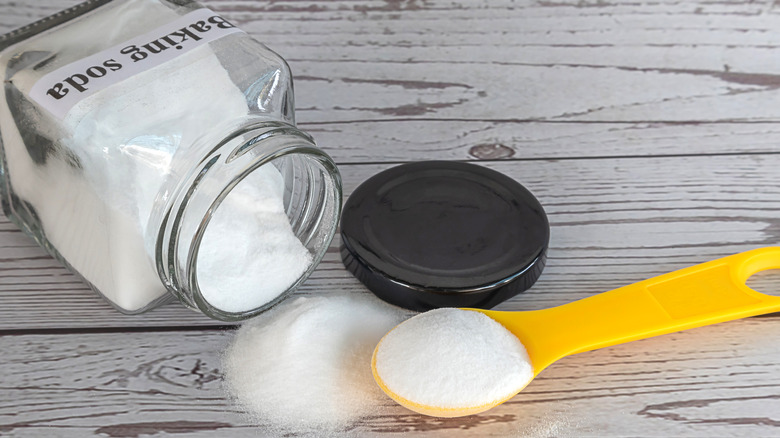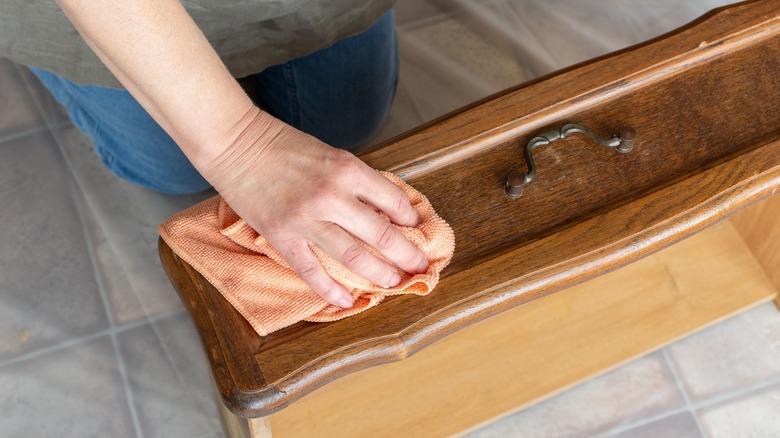Baking Soda Can Be A Cleaning Hero, But You Don't Want To Use It On Antiques
Baking soda is a low-cost cleaning ingredient that can be safely used on various surfaces. You might choose to use it to scrub your steel cookware or clean grease out of your air fryer. Although the gritty powder is incredibly versatile, there are still a few household items you should never clean with baking soda, and this includes antiques. The delicate, aged materials that antiques are often made of can easily become scratched while using abrasive baking soda. The popular cleaning product can be particularly damaging to silver because it might cause it to lose signs of aging that many antique collectors actually find to be visually appealing.
It may be tempting to reach for baking soda to scrub grime off dirty antiques after you purchase them. However, this could cause irreparable damage to your one-of-a-kind pieces. Consider safer ways to clean your antiques instead. Having your items cleaned by an experienced professional is the best way to minimize the risk of damage. If you would prefer to save money by cleaning them yourself, you will have to take some time to research what products and cleaning tools can safely be used on the specific materials that make up your particular antiques.
Baking soda is too abrasive for delicate antiques
As you may already know, baking soda is sometimes a useful cleaning tool, but it's also harsh enough to leave scratches on certain surfaces. Antique items that are decades or even hundreds of years old can become worn down as they are passed from owner to owner over time. These fragile pieces are even more susceptible to scratches. In particular, baking soda can easily scratch antique silver. This is especially damaging because it may wear away the patina on your silver pieces and lower their value.
Patina is a form of natural discoloration that develops on certain metals over time. It is often found on antique silver. Patina is part of the charm and appeal of these pieces, so you likely want to avoid stripping it away with baking soda. Any antique wood furniture or decor can be damaged by baking soda, as well. When the cleaning product scratches into this material, it can remove any protective coating that exists on the item. This leaves your wooden antique vulnerable to eventual rotting.
How to clean your antiques the right way
If you choose to skip out on hiring professionals to clean your antiques, you need to exercise caution. Cleaning these pieces yourself requires a bit of education regarding which products can be used on each of your antique materials. To clean your wood furniture, you can typically safely use a gentle cloth dampened with a mixture of mild soap and water to get rid of grime. Dry the wet spots with a separate cloth after you finish.
You will need to use a separate cleaning method for antique wood coated with wax. Rather than using soap and water, gently wipe grime away with odorless mineral spirits. You can purchase this cleaning product at Home Depot for about $10.
Antique silver is simple to clean yourself as long as you avoid abrasive cleaning materials. Silver polish can typically be safely used on these pieces. Antique silver can also be washed in mild soap and hot water. If you need to wipe away stubborn grime, use a non-abrasive cloth. Other metals may require different cleaning processes, so be sure to identify the type of metal material you will be working with before moving forward.


